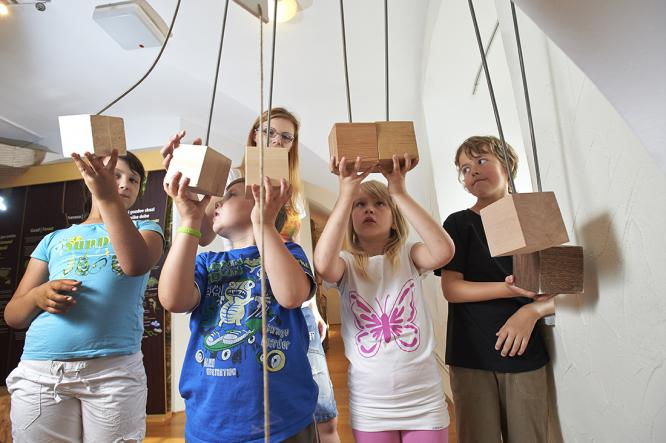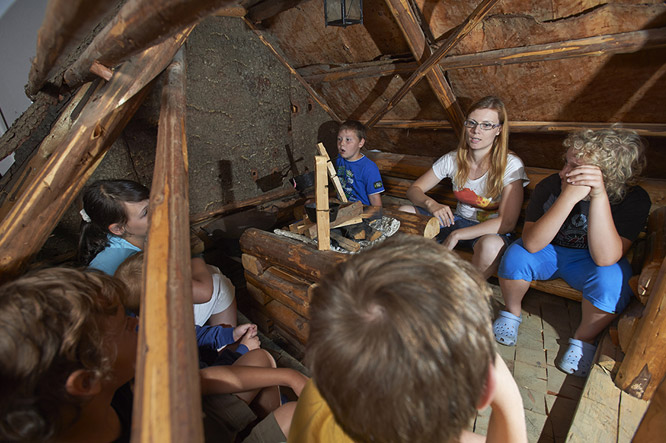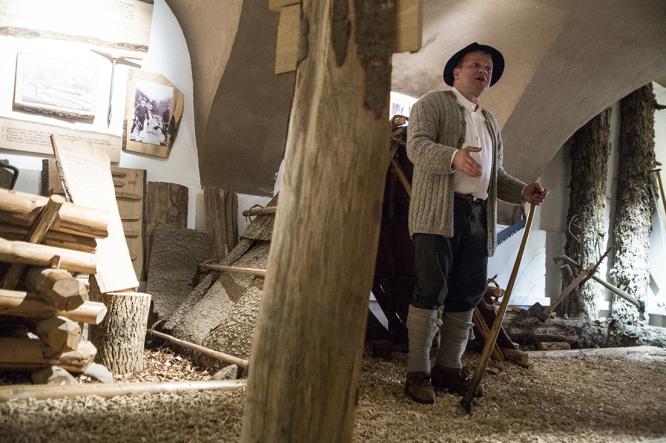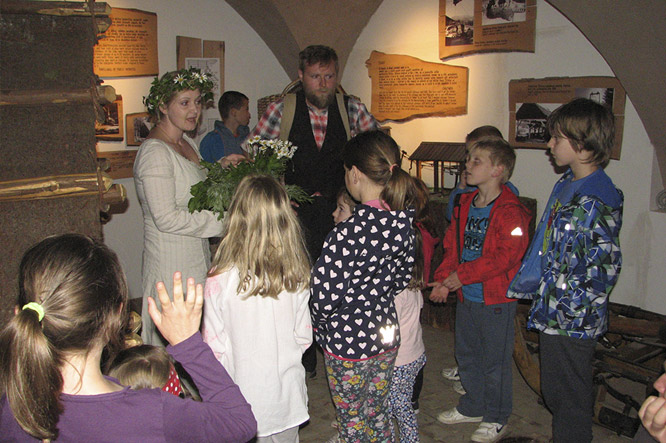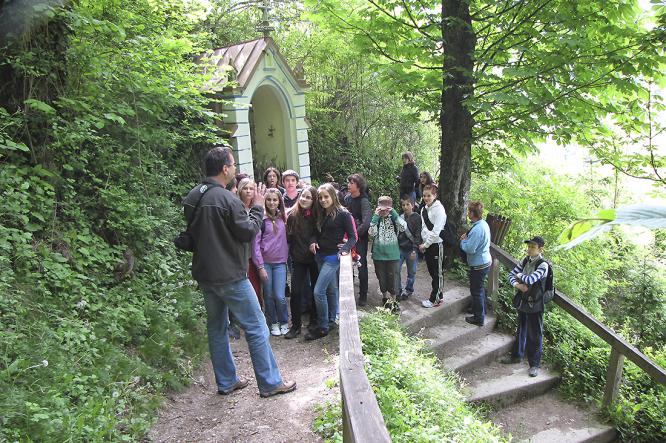- MUSEUM
-
EDUCATIONAL TRAIL
-
Natural and cultural educational trail Monastery Hill
- Everything is connected to everything
- What is a forest? What does the forest mean to me?
- It is home to mixed deciduous forests.
- Forests protect and preserve!
- The Upper Savinja Valley (Zgornja Savinjska dolina) is covered by vast and varied forests.
- They looked after people's spiritual and physical health and knowledge.
- The forest is a treasure trove of biodiversity, and it is full of life.
- The circulation of substances in nature allows new growth
- Natural regeneration of forests
- How old am I? Count it!
- Rock and soil
- Acacia overgrowth
- Spruce is an increasingly threatened tree species in the lowlands
- What does a forester do?
- Wetland is not a dump!
- The forest edge protects, conserves and enriches the forest
- Water and the forest are linked and interdependent
- Confluence of Savinja and Dreta
- Treating the forest with care when we visit it
-
Natural and cultural educational trail Monastery Hill
- BOHAČ DOUBLE HAYRACK
- SCHOOL PROGRAMMES
- PROGRAMMES FOR ADULTS
- FAMILIES
- ABOUT MUSEUM
- CONTACT
- OPENING HOURS AND PRICES
SCHOOL PROGRAMMES
Guidance through the exhibition
for school groups is adjusted to the age of children. Through active participation, pupils strengthen their knowledge about tree species, get to know forests in Slovenia and around the world, their significance, different types of wood, etc.
Then, they walk through the past. They familiarise themselves with the work of former woodcutters, horse and cart drivers, sawyers and rafters, get to know old methods of felling, harvesting, sawing and transport of wood to distant places. The work of carpenters, joiners and wheelwrights is also presented. Using models and layouts in natural size, we bring the past closer to pupils in an interesting and informative way.
Price: €2.00/pupil
Museum Learning Hour
The detailed presentation of museum content is followed by filling in worksheets, comprising of 11 tasks. They are designed to encourage logical thinking and represent a short summary of topics introduced during the guidance.
Price: €3.00/pupil
EXPERIENTIAL TOURS IN MUSEUM, VICINITY OF VRBOVEC CASTLE AND THE BOHAČ DOUBLE HAYRACK
Experiential guidance through the museum and the double hayrack offers the possibility of a unique experience and learning about the natural and cultural heritage of the Upper Savinja Valley. In the roles of characters from the past, experienced storytellers will present events and interesting facts from the Upper Savinja Valley using live interpretation of stories, and short and fun games. You can choose between four programmes of experiential guidance.
1.Tree Elf
In the spirit of folk tales, we will set off with fairytale guidance through the museum. There were times when foresters spent several weeks in the forests. They knew the stories of wild men, they knew where forest fairies lived and they knew how to defend themselves against scary wild hunt. Local fairy tales and stories will help children to get to know the tradition of forest management and many fabulous secrets. The guidance, carried out by a narrator in the role of a woodcutter (logger) or a travelling woman, is adjusted to the age of a group.
Price: €3.00/pupil
Price: €5.00/pupil
2.Stories from the Forest
After the experiential guidance though the museum, a group sets off to the castle tower. Gathered at the lookout platform, we sit in a circle around a fire, and listen to a folk story from the Upper Savinja Valley. Then, we head to the confluence of the Savinja and Dreta Rivers, where we play old woodcutter’s games. In case of rain, the programme is adjusted and relocated to the Bohač double hayrack.
Price: €7.00/pupil
3.Journey of the Wood
The people of the Upper Savinja Valley have always lived in close harmony with the forest. Wood gave them a livelihood, while harvesting and sale of wood were the main source of income for centuries. Experiential guidance will revive the stories of woodcutters, sawyers, rafters and travelling women. A travelling woman or a woodcutter will take a group on a journey through history, where visitors must also help with work.
Price: €3.00/pupil
Price: €5.00/pupil
4.Little Secrets of the Upper Savinja Valley
There are so many beautiful stories here talking about the landscape and the people who experienced them. During the programme, which takes place in the Bohač double hayrack, you will learn about the potters from the Dreta Valley, “bicka” wool from Solčava, potica from Ljubno, the monks in Gornji Grad, and many other secrets. We will present them to you through a fun interactive quiz.
Price: €5.00/pupil
JOINER’S WORKSHOP
A professional joiner takes part in the workshop, who presents the work of joiners to pupils and familiarises them with various joiner’s tools. Then, the pupils themselves test their skills in sawing, sanding, drilling and bonding. Every pupil makes their own useful product (wooden flute, wooden jewellery, etc.), and takes it home.
Price: €5.00/pupil
MONASTERY HILL EDUCATIONAL TRAIL
There is an educational trail maintained in the vicinity of the museum, which allows direct contact with nature to children. Pupils are accompanied by a forester during this one and a half hour tour. They familiarise themselves with the history of the place, Vrbovec Castle, and the Franciscan monastery, and above all learn the importance of forests, the role of the forest and the forest edge, different tree and shrub species, sustainable forest management, non-native invasive species, and many other interesting facts.
Price: €1.50/pupil

